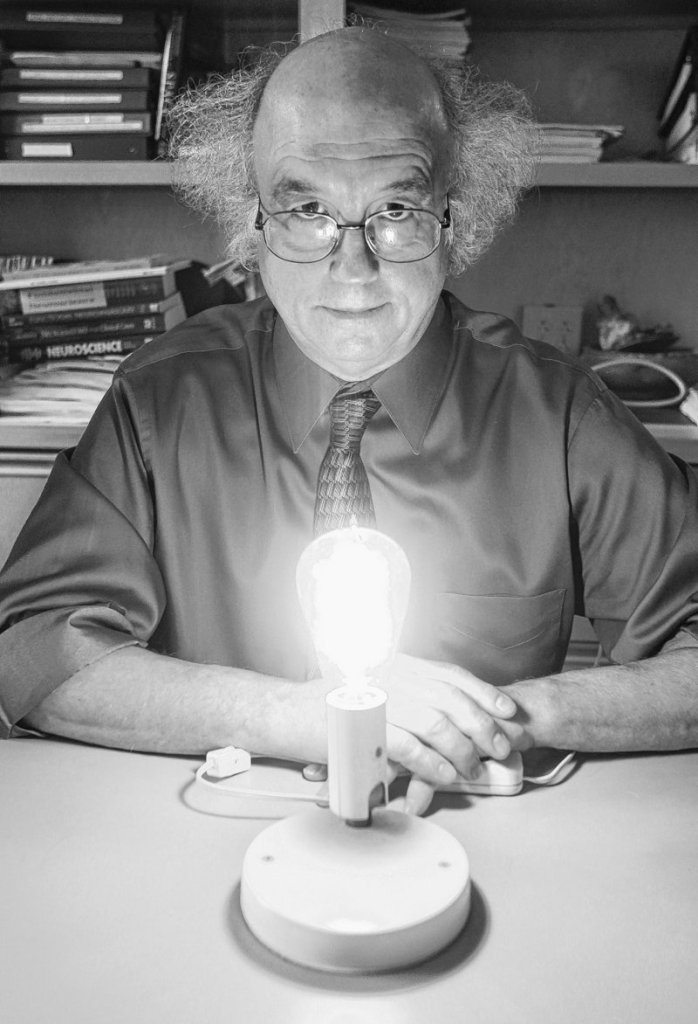PHILADELPHIA – A new sunrise takes place every 90 minutes. Docking maneuvers sometimes occur at odd hours. Then there’s that feeling of apparent weightlessness.
No wonder astronauts aboard the International Space Station can have a hard time getting a good night’s sleep.
Now, a neuroscientist at Thomas Jefferson University is among those working on a solution: light.
George C. Brainard is advising NASA as it prepares to replace the aging fluorescent lights on the station with high-tech LED fixtures. The lights, which received the agency’s go-ahead earlier this year, can be adjusted to enhance or relax an astronaut’s state of alertness at the appropriate time of day.
The plan is the outgrowth of research by Brainard and others that has established how light plays a powerful role in regulating our various biological clocks. Changes in light exposure can affect sleep, digestion, cognitive performance and mood — a phenomenon known to people who experience jet lag, night-shift work or the seasonal blahs associated with the shorter days of winter.
Initially, NASA planned to replace the lights on the space station with LED fixtures purely because they last much longer than fluorescents and are energy efficient. But when Brainard heard about the plan, he and a handful of other experts urged the agency to modify the specifications so that the lights could be a tool for maintaining astronaut health.
“Bud was instrumental” in making the case for the adjustable lights, said NASA flight surgeon Smith Johnston, referring to Brainard by his nickname.
Aboard the station, astronauts average as little as six hours of sleep during a 24-hour period, even though they are allotted 8.5 hours, Johnston said.
Sleep becomes even harder with disruptions, such as the occasional emergency or a docking procedure that may require the crew to get up in the middle of their sleep time. Some astronauts take short-acting sleeping pills, but the addition of adjustable lights will be welcome, Johnston said.
“If you’re chronically sleep-deprived, you don’t perform as well,” the NASA physician said. “You’re moody. You don’t have as good coping mechanisms.”
It’s a cause for concern during a six-month stay aboard the space station, let alone for an eventual Mars mission that could last three years, Brainard said.
“Every one of us has probably done an all-nighter or two in our lives,” Brainard said. “You feel crummy the next day, but you bounce back. And you also get your recovery sleep. They (the astronauts) are not getting their recovery sleep. That’s the problem. Day in, day out, they’re missing the ingredients for best health and best behavioral regulation.”
The new lights will have three “on” settings — one to boost alertness in the morning, one to help astronauts relax before bed, and a regular mode for midday. All of them appear white, more or less, but the morning setting is brighter and is “enriched” with cool, bluish tones, while the evening setting is heavier on warmer, reddish hues.
Some of the science behind these color choices was conducted by Brainard, a professor of neurology at Jefferson Medical College. He discovered more than a decade ago that a specific shade of blue light was most effective at tamping down the body’s production of the hormone melatonin, which helps regulate sleep.
His research continues, funded both by NASA and by the National Space Biomedical Research Institute. To that end, Brainard hired a carpenter to build replicas of the tiny sleeping quarters that crew members use on the space station.
He hires research volunteers to spend hours at a time inside these quarters, which are about the size of a closet, and tests their melatonin levels after exposure to various hues of light.
Melatonin by itself is not a powerful sleep-inducer, contrary to what some marketers suggest in ads. But it does play a role in regulating the circadian rhythm. Echoing his original research, Brainard has found that pure blue light is more effective than white at suppressing melatonin levels.
Copy the Story Link
Send questions/comments to the editors.



Success. Please wait for the page to reload. If the page does not reload within 5 seconds, please refresh the page.
Enter your email and password to access comments.
Hi, to comment on stories you must . This profile is in addition to your subscription and website login.
Already have a commenting profile? .
Invalid username/password.
Please check your email to confirm and complete your registration.
Only subscribers are eligible to post comments. Please subscribe or login first for digital access. Here’s why.
Use the form below to reset your password. When you've submitted your account email, we will send an email with a reset code.